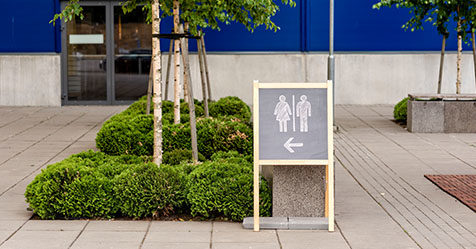4 Things to Do Before a Wildfire Hits Your Facility
There are several proactive things facilitators can do to help keep their buildings and occupants safe.
Several wildfires are sweeping across the western and southwest United States. As of August 3, the National Interagency Fire Center reported 62 large fires and complexes (that being two or more fires located in the same vicinity) currently raging in 15 states, with 1,626,413 acres burned as a result. Three new large fires were reported in Arkansas, California, and Texas. Nearly 10,000 wildland firefighters and support personnel are currently assigned to incidents across the country.
Compared to last year at this time, the number of wildfires has grown by 1,560, with 38,207 fires in 2021 and now 39,767 fires in 2022.
With wildfires increasing over the last three years and involving several regions throughout the country, it only makes sense to be prepared for the event of a wildfire before it reaches your facility.
Be Prepared Before a Wildfire Hits
The best defense is a good offense. The more you can do ahead of time to be prepared in case of a wildfire, the better your chances will be of remaining safe. The U.S. Centers for Disease Control and Prevention (CDC) suggests the following four ways to be proactively prepared before a wildfire becomes a threat to your building and its inhabitants.
1. Know your building and your community evacuation plans.
You probably already know how to get out of your building in case of a fire. But do you know your community’s plan? You’ll want to know and communicate to occupants not only how to get out of the building, but how to get out of the area as a whole. Identify several ways to leave the area and see what the community suggests as an escape plan as well. Then drive the evacuation routes yourself and find any shelter locations. Suggest that occupants do the same. Better to be familiar with the routes now, in an unhurried and relaxed state, rather than in the moment, when everyone will be feeling rushed, stressed, and possibly panicked.
2. Have emergency supplies on hand.
You’ll want to have respirators available, and they should specifically be N95 or P100 respirators, which help protect lungs from smoke or ash. Not everyone will need a respirator if they can remain indoors and limit their exposure to the wildfire’s smoke. But people with existing breathing issues or those experiencing health effects from a smoky environment, even if indoors, can benefit from using a tight-fitting respirator to reduce their exposure.
3. Ensure the quality of your building’s indoor air.
The U.S. Environmental Protection Agency (EPA) suggests consulting a guide put out by ASHRAE (formally the American Society of Heating, Refrigerating and Air Conditioning Engineers), which outlines the necessary steps to keep the air in your building safe during a wildfire. The recommendations are specifically designed for commercial buildings, schools, and other similar facilities with air-handling HVAC units that bring outside air into buildings or recirculate indoor air.
4. Keep track of wildfires in your area.
Be vigilant. You’ll want to stay aware of any wildfires and keep tabs on their status. That way, you can avoid being caught by surprise, and if need be, you’ll be all-the-more ready to implement any related plans, including evacuations. Listening to National Oceanic and Atmospheric Administration (NOAA) Weather Radio for emergency alerts is one way to keep track. You can also check out NOAA’s “Fire weather outlook” webpage, which maps fire watches and warnings, as well as AirNow’s “Fires: Current Conditions” webpage, which shows a map of current fires throughout North America.


